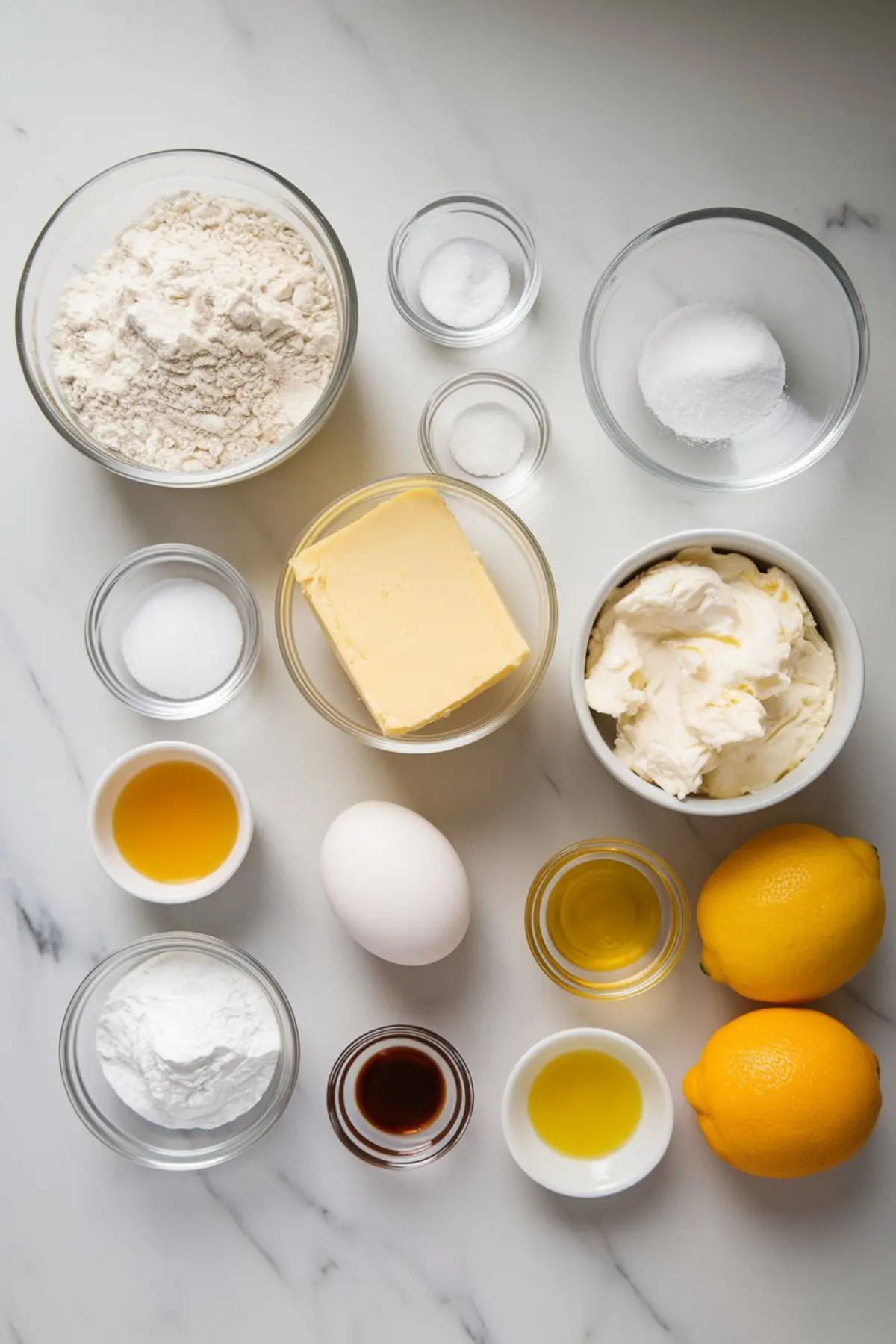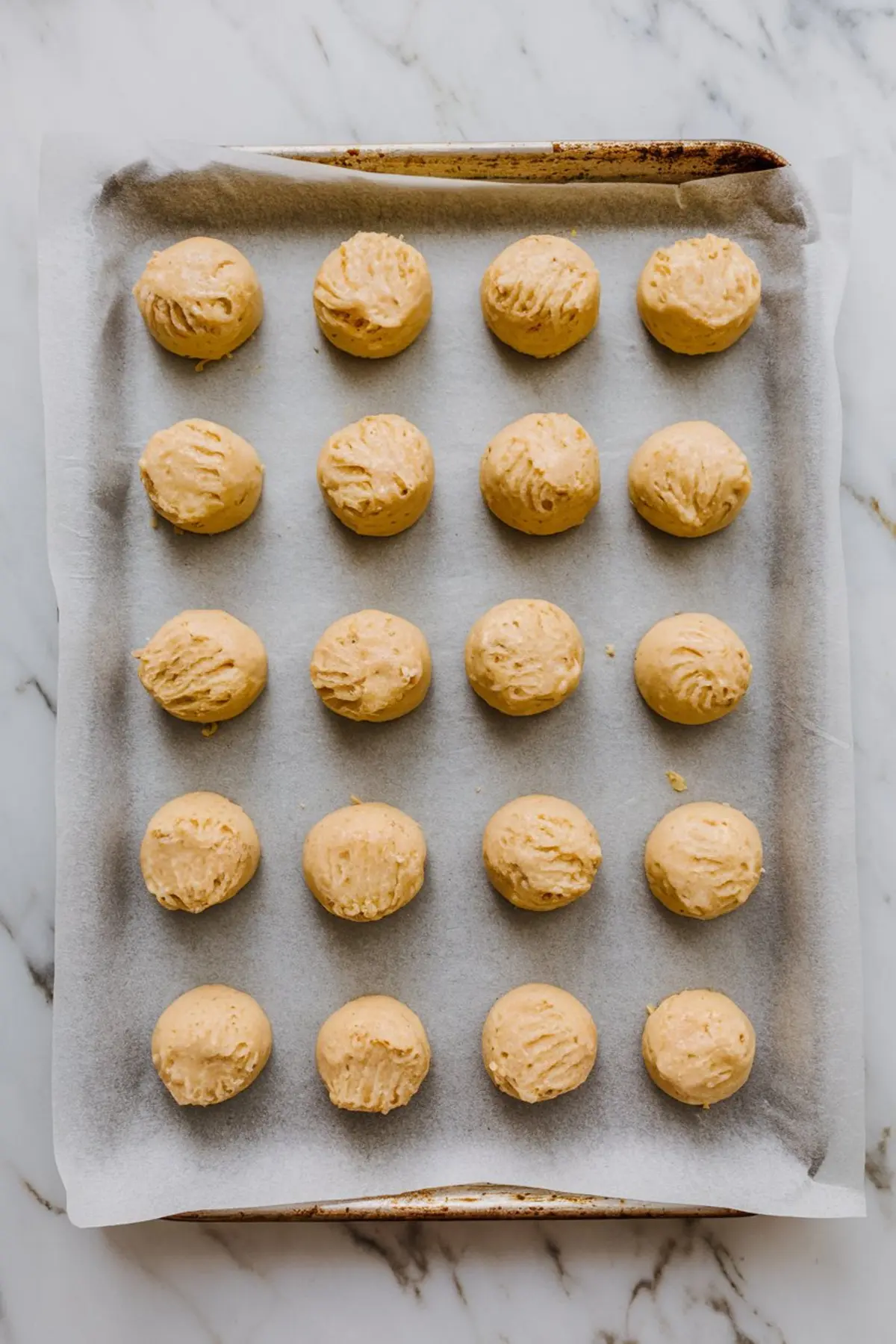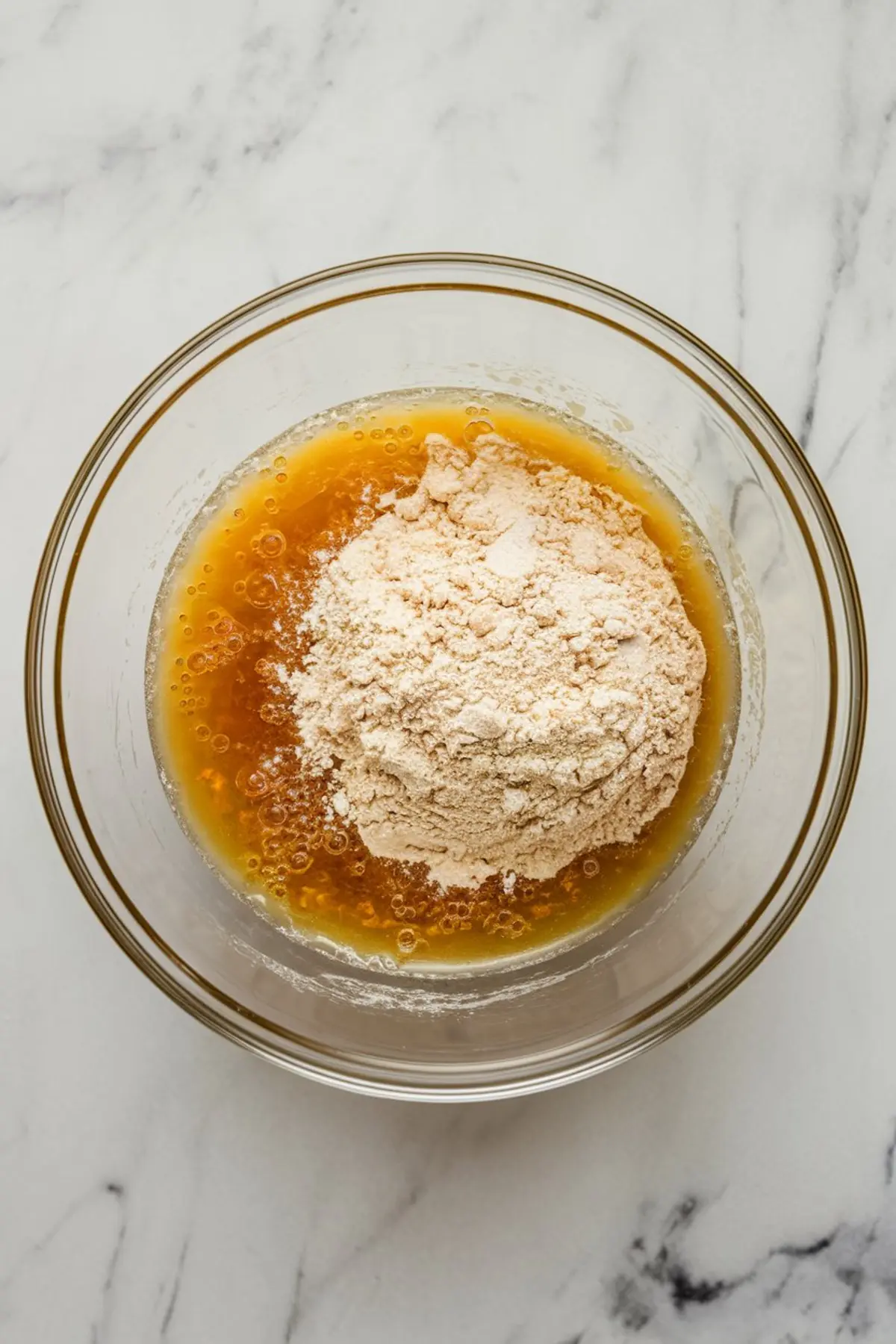Soft lemon cookies are nothing new. You’ve probably seen dozens across Pinterest already. But the moment ricotta enters the dough, everything shifts. These aren’t just soft—they’re delicate, almost cake-like. A bite gives you brightness, creaminess, and just the right amount of chew.
This post shows you why ricotta matters in cookies and how lemon can transform more than flavor—it changes the mood.
You’ll learn how I make these tender lemon ricotta cookies, how to store them without sacrificing texture, and the trick to getting that lemon glaze just right.

Ricotta in Cookies? Here’s Why It Works
Ricotta may not be the first thing you think of when baking cookies. But once you’ve used it, regular butter-only dough will feel flat. Ricotta lifts the texture. It adds moisture without heaviness. These cookies come out tender and pillowy, never dry, never dense.
I started making these after a family Easter lunch. We had leftover ricotta, and I wanted something sweet but light. Lemon ricotta cookies came out of that kitchen experiment, and now I keep a tub in the fridge just for this.
What surprised me most was the balance. Ricotta softens the sugar, and lemon brightens the dairy. It’s a soft, round cookie with sharp citrus edges. The kind of cookie you can eat two (maybe three) of without blinking.
Why Fresh Lemon Makes a Difference in the Dough and Glaze
These cookies use both lemon zest and juice, twice—once in the dough and again in the glaze. That’s not just for extra zing. The juice gives sharpness. The zest brings perfume. Use fresh lemons. Bottled juice won’t cut it.
In the dough, lemon plays against the vanilla and sugar. The glaze, thin and simple, delivers one last punch of flavor. That contrast matters. The cookie melts. The glaze cracks. And the citrus lingers.
If you’ve enjoyed my Lemon Meringue Tart or Oatmeal Lemon Crumble Bars, you know lemon works best when it feels alive. That brightness is essential here too.

How I Mix and Bake for the Right Texture
After preheating the oven and lining my sheets, I start with the dry ingredients in one bowl: flour, baking powder, soda, and salt. In another bowl, I cream the butter and sugar. This part matters—beat it until pale and fluffy.

Then I add the egg, the ricotta, the zest, the juice, the vanilla. It looks like a mess at first, but it smooths out. That’s the base. Then I gently fold in the dry ingredients. Don’t overmix. If you go too far, you lose the softness.

Use a medium scoop and give them space. They puff, not spread. Bake until the bottoms have the faintest color. The tops should look set, not browned. That’s when you know they’re done.

I let mine cool for five minutes on the tray, then transfer to a rack. Don’t rush the glaze.
How I Get the Lemon Glaze to the Right Consistency

Start with one cup of powdered sugar and add two tablespoons of fresh lemon juice. Stir. Then pause. If it’s too thick, add a touch more juice. Too thin? Add a bit more sugar. You want something spoonable, not runny.
I use a small spoon to drizzle over each cookie. If the glaze runs off, your cookies aren’t cool enough—or your glaze is too thin.
Sometimes I sprinkle on a touch of extra zest. It’s optional. But I like the hint of yellow and the extra scent when you lift it to your mouth.
How to Store Lemon Ricotta Cookies Without Losing That Softness
These cookies stay soft for three days at room temperature. I store them in an airtight tin lined with parchment. I keep a little space between layers so the glaze doesn’t smudge.
If you’re saving them longer, freeze the unglazed cookies. Thaw and glaze before serving. The glaze doesn’t freeze well.
I’ve packed them in lunch boxes, brought them to book club, and kept a few for late-night tea. They don’t harden like sugar cookies. That’s ricotta working quietly in the background.
How I Like to Serve These for Guests (and Myself)
I serve these cookies with chamomile tea in spring. With black coffee in winter. Once, I placed them in paper cupcake liners on a tiered tray, and they looked like lemon petits fours.
These cookies don’t need sprinkles or filling. Their charm is subtle. If you want something more visual, try the Lemon Poppyseed Mini Bundt Cakes or the lavender-glazed Lemon Bars for something showier.
But these? These are the kind you keep for slow afternoons and quiet company.
Final Thoughts and Why I Keep Ricotta in My Fridge Now

I never thought I’d be adding cheese to cookies. But here we are. Ricotta doesn’t shout. It just does the quiet work of keeping your cookies tender, balanced, and bright.
Try these if your usual lemon cookies feel flat or dry. Try them if you’ve never baked with ricotta. Try them if you just want something soft, simple, and citrusy.
And once you’ve made them, come back. Let me know how they turned out. Or if you changed something. I always love hearing from you.
Save this recipe on Pinterest so you can find it next time lemon season hits. And drop a comment below—what did you pair them with? Did the glaze set just right?
Let’s swap stories and cookies.
Soft Lemon Ricotta Cookies Recipe

These soft lemon ricotta cookies are tender, cake-like, and flavored with fresh lemon in both the dough and the glaze. Ricotta cheese gives them a moist, pillowy texture, while lemon zest and juice add brightness and balance. Topped with a simple lemon glaze, these cookies are quick to make and full of fresh, citrus flavor.
Ingredients
- For the Cookies:
- 2 cups all-purpose flour
- 1 teaspoon baking powder
- 1/2 teaspoon baking soda
- 1/4 teaspoon salt
- 1/2 cup unsalted butter, softened
- 1 cup granulated sugar
- 1 large egg
- 1 cup whole milk ricotta cheese (drained if watery)
- Zest of 1 lemon
- 2 tablespoons fresh lemon juice
- 1 teaspoon vanilla extract
- For the Lemon Glaze:
- 1 cup powdered sugar
- 2–3 tablespoons fresh lemon juice
- 1/2 teaspoon lemon zest (optional)
Instructions
- PREHEAT THE OVEN: Preheat the oven to 350°F (175°C) and line two baking sheets with parchment paper or silicone baking mats.
- MIX DRY INGREDIENTS: In a medium bowl, whisk together the flour, baking powder, baking soda, and salt. Set aside.
- CREAM BUTTER AND SUGAR: In a large mixing bowl, use a hand mixer or stand mixer to beat the softened butter and granulated sugar together until the mixture is light and fluffy, about 2–3 minutes.
- ADD RICOTTA, EGG, AND FLAVORINGS: Add the egg, ricotta cheese, lemon zest, lemon juice, and vanilla extract to the creamed mixture. Beat until fully combined and smooth.
- COMBINE DRY AND WET INGREDIENTS: Gradually add the dry ingredients to the wet ingredients, mixing just until the flour is incorporated. Do not overmix.
- PORTION AND BAKE: Use a medium cookie scoop or tablespoon to drop spoonfuls of dough onto the prepared baking sheets, spacing them about 2 inches apart. Bake for 12–14 minutes, or until the bottoms are lightly golden and the tops are set.
- COOL THE COOKIES: Let the cookies cool on the baking sheets for 5 minutes, then transfer them to a wire rack to cool completely before glazing.
- MAKE THE GLAZE: In a small bowl, whisk together the powdered sugar and 2 tablespoons of lemon juice. Add the remaining tablespoon of juice as needed for desired consistency. Stir in lemon zest if using.
- GLAZE THE COOKIES: Spoon or drizzle the glaze over the cooled cookies. Allow the glaze to set before serving or storing.
Notes
Drain ricotta if it appears watery to avoid overly soft dough. Store cookies in an airtight container at room temperature for up to 3 days. Glaze can be adjusted with more or less lemon juice for preferred thickness.
Nutrition Information
Yield
24Serving Size
1Amount Per Serving Calories 149Total Fat 6gSaturated Fat 3gTrans Fat 0gUnsaturated Fat 2gCholesterol 23mgSodium 81mgCarbohydrates 23gFiber 1gSugar 13gProtein 3g

